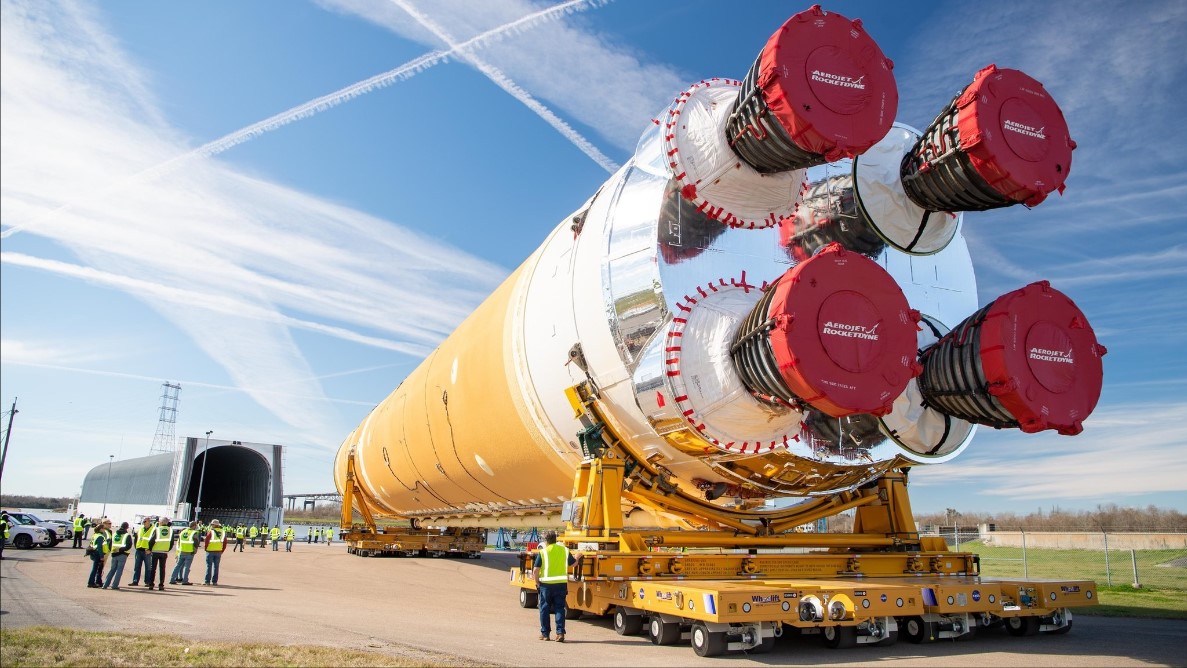NASA's Giant Artemis 2 Moon Rocket Core Rolls Out for Historic Astronaut Mission

In a monumental step forward for space exploration, NASA has rolled out the massive core stage of the Artemis 2 rocket from its Michoud Assembly Facility in New Orleans. This significant event, which occurred on July 16, marks the first time in over half a century that a rocket designed to carry astronauts to the moon has left its manufacturing plant, setting the stage for an anticipated lunar mission.
The Artemis 2 mission, slated for 2025, aims to send four astronauts around the moon, a feat not achieved since the Apollo missions of the 1970s. The core stage, a towering 212-foot structure powered by four RS-25 engines, began its journey early in the morning, rolling out from the Michoud's Vertical Assembly Center at around 7:30 a.m. CDT. The atmosphere was electric, with hundreds of Michoud workers and their guests gathering to witness the historic moment.
The celebration was a mix of excitement and nostalgia, amplified by the symbolic date that coincides with the 55th anniversary of the Apollo 11 launch. The event kicked off with a lively performance by the Roots of Music Marching Crusaders, a local school marching band, adding a festive touch to the proceedings. As the giant booster made its way through the facility gates and onto the main road, the sense of history in the making was palpable.
Joseph Pelfrey, director of NASA's Marshall Space Flight Center, addressed the crowd, highlighting the collective effort behind the Artemis program. "For more than six decades, Marshall and Michoud have been at the forefront of some of this nation's greatest achievements in space exploration," he said. "From the incredible accomplishments of the Apollo missions to 135 shuttle missions, today we celebrate not just the hardware, but the people who have made this possible."
The Artemis program represents NASA's ambitious goal to establish a sustainable human presence on the moon. This mission is particularly focused on the lunar south pole, an area rich in water ice, which is a crucial resource for future space exploration. Water ice can be converted into drinking water, breathable oxygen, and even rocket fuel, making it a key element for long-term lunar habitation and future missions to Mars.
As the Artemis 2 core stage travels to the Kennedy Space Center in Florida for further assembly, the excitement builds for what promises to be a groundbreaking mission. The journey of the Artemis 2 rocket core is more than just a physical relocation; it symbolizes the forward momentum of human space exploration. The efforts of engineers, scientists, and countless other contributors have culminated in this milestone, bringing humanity one step closer to returning to the moon and beyond.
This ceremonious rollout not only celebrates the engineering marvel that is the Space Launch System (SLS) booster but also honors the dedication and hard work of the people behind the scenes. As the Artemis 2 mission progresses, each step brings us closer to a new era of space exploration, with the moon as the next frontier and Mars on the horizon.


